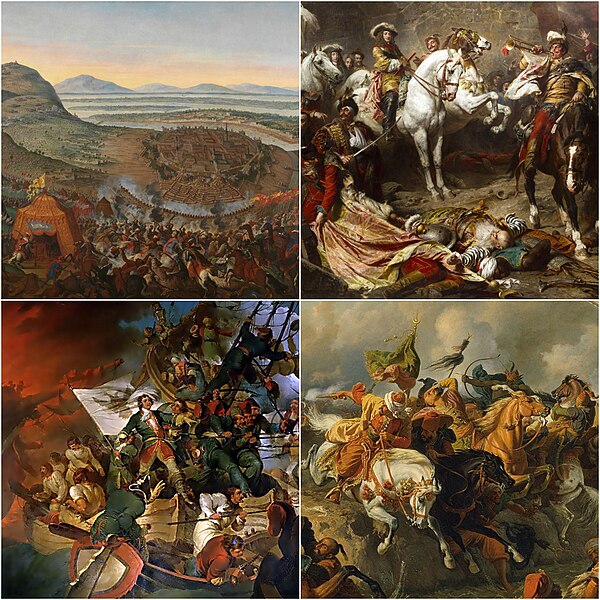Francesco Morosini was the Doge of Venice from 1688 to 1694, at the height of the Great Turkish War. He was one of the many Doges and generals produced by the Venetian noble Morosini family. He is said to have "dressed always in red from top to toe and never went into action without his cat beside him."
Portrait by Giovanni Carboncino
Merit Offers the Command to Doge Morosini, by Gregorio Lazzarini, 1694
Medal struck in Morosini's honour for his military exploits in the Morean War.
The Great Turkish War, also called the Wars of the Holy League, was a series of conflicts between the Ottoman Empire and the Holy League consisting of the Holy Roman Empire, Poland-Lithuania, Venice, Russia, and the Kingdom of Hungary. Intensive fighting began in 1683 and ended with the signing of the Treaty of Karlowitz in 1699. The war was a defeat for the Ottoman Empire, which for the first time lost substantial territory, in Hungary and the Polish–Lithuanian Commonwealth, as well as in part of the western Balkans. The war was significant also for being the first instance of Russia joining an alliance with Western Europe.
From top left: The Battle of Vienna, the Siege of Buda, the Azov campaigns, the Battle of Zenta
Mustafa II came to power during the war, where he personally commanded the Ottoman Army.
Nafplion, or Napoli di Romagna, in the mid-16th century
The conquest of Preveza in 1684







